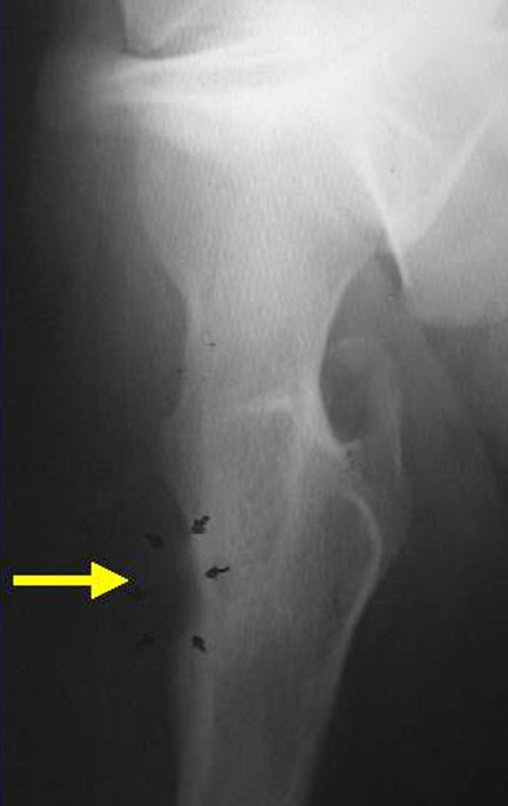[auto_translate_button]
Osteoid Osteoma Osteoid osteoma is a benign osteoblastic lesion, smaller than one centimeter, with precise limits and with reactive bone sclerosis around osteoid tissue, with highly vascularized stroma and histologically mature bone.
Osteoid osteoma
It is a lesion that is preferably located in the cortex of long bones or in the pedicle of the spinal column (compact bones). It can occur in three different locations in the bone:
- Cortical : the vast majority, figures 1 and 2a, 2b and 2c.







